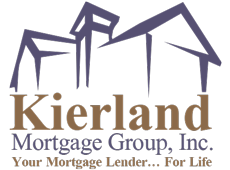The VA Loan provides veterans with a federally guaranteed home loan which requires no down payment. This program was designed to provide housing and assistance for veterans and their families.
The Veterans Administration provides insurance to lenders in the case that you default on a loan. Because the mortgage is guaranteed, lenders will offer a lower interest rate and terms than a conventional home loan. VA home loans are available in all 50 states. A VA loan may also have reduced closing costs and no prepayment penalties.
Additionally there are services that may be offered to veterans in danger of defaulting on their loans. VA home loans are available to military personal that have either served 181 days during peacetime, 90 days during war, or a spouse of serviceman either killed or missing in action.
The Veteran Administration’s Loan originated in 1944 through the Servicemen’s Readjustment Act; also know as the GI Bill. It was signed into law by President Franklin D. Roosevelt and was designed to provide Veterans with a federally-guaranteed home loan with no down payment. VA loans are made by private lenders like banks, savings & loans, and mortgage companies to eligible Veterans for homes to live in. The lender is protected against loss if the loan defaults. Depending on the program option, the loan may or may not default.
Wartime/Conflict Veterans
- Veterans who were NOT Dishonorably Discharged, and served at least 90 days
- World War II – September 16, 1940 to July 25, 1947
- Korean Conflict – June 27, 1950 to January 31, 1955
- Vietnam Era – August 5, 1964 to May 7, 1975
- Persian Gulf War – Check with the Veterans Administration Office
- Afghanistan & Iraq – Check with the Veterans Administration Office
- Veterans Administration website www.va.gov
Peacetime Service
At least 181 days of continuous active duty with no dishonorable discharge. If you were discharged earlier due to a service-related disability you should contact your Regional VA Office for eligibility verification.
- July 26, 1947 to June 26, 1950
- February 1, 1955 to August 4, 1964, or May 8, 1975 to September 7, 1980 (Enlisted), or to October 16, 1981 (Officer)
- Enlisted Veterans whose service began after September 7, 1980, or officers who service began after October 16, 1981, must have completed 24-months of continuous active duty and been honorably discharged
Reserves and National Guard
- Certain U.S. Citizens who served in the Armed Forces of a government allied with the United States during World War II.
- Surviving spouse of an eligible Veteran who died resulting from service, and has not remarried.
- The spouse of an Armed Forces member who served Active Duty, and was listed as a POW or MIA for more than 90-days.
A VA home loan must be used to finance your personal residence within the United States and its territories. You have choices for the type of home you purchase:
- Existing Single-Family Home
- Townhouse or Condominium in a VA-Approved Project
- New Construction Residence
- Manufactured Home or Lot
- Home Refinances and Certain Types of Home Improvements
- 100% Financing & No Down Payment Loans
- No Private Mortgage (PMI)
- No Penalties for Prepaying the Loan
- Competitive Interest Rates
- Qualification is Easier than a Conventional Loan
- Sellers Pay Some of the Closing Costs
- Can be combined with additional down payment assistance to reduce closing costs
You can apply for a VA Loan with any mortgage lender that participates in the program. In addition to the application requirements from your lender, you will need the following at application time:
- Certificate of Eligibility from the Veterans Administration by submitting a completed VA Form 26-1880.
- Proof of Military Service from a VA Eligibility Center
Yes, your eligibility is reusable depending on the circumstance. If you have paid-off your prior VA Loan, and disposed the property, you can have your eligibility restored again. Also, on a 1-time basis, you may have your eligibility restored if your prior VA Loan has been paid-off, but you still own the property. Either way, the Veteran must send the Veterans Administration a completed VA Form 16-1880 to the VA Eligibility Center. To prevent delays in processing, it’s advisable to include evidence that the prior loan has been fully paid, and if applicable, the property was disposed. A paid-in-full statement from the former lender or a copy of the HUD-1 settlement statement must be submitted.
- VA Loans made prior to March 1, 1988 can be assumed with no qualifying of the new buyer. If the buyer defaults the property the Veteran homeowner may be liable for the funds.
- Some sellers are hesitant to work with someone obtaining a VA Loan because it takes longer than a conventional loan to process.
- Sellers are often asked to pay a portion of closing costs and therefore less likely to negotiate the sales price of the home.

